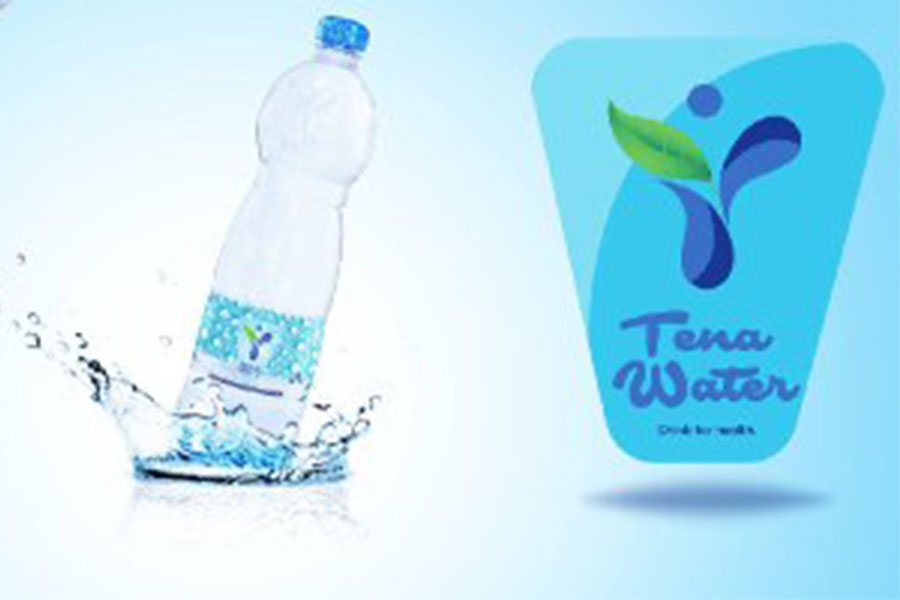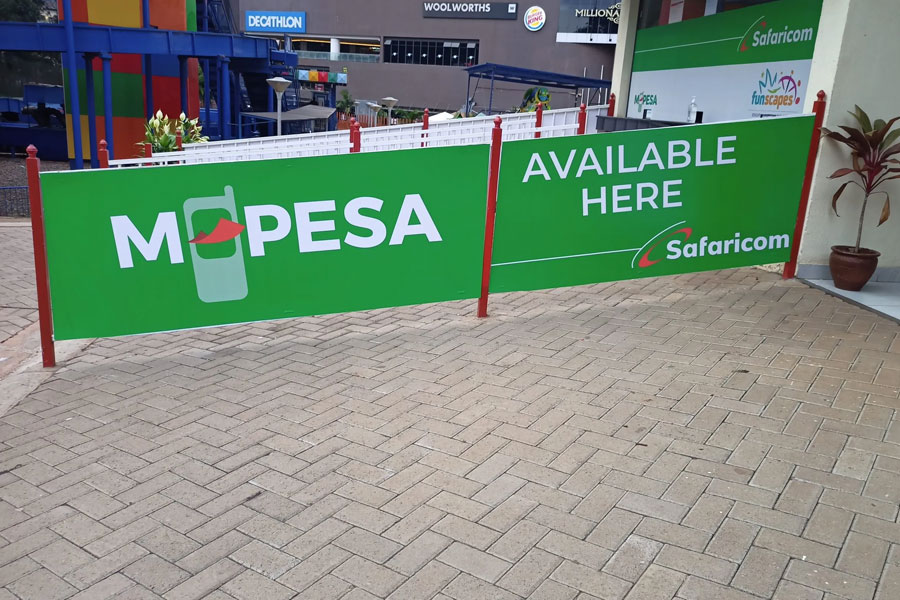
Founded by the 44-year-old father of four Engidawerk Yifru, Motherland Enjera has been in the injeramaking business for almost half a decade.
Having worked in the car export business and being a musician in Norway for 19 years, Engidawerk, founded the company with five million Birr of capital.
Five years ago the company, which is currently managed by Anteneh Negus, who is a partner, used to bake 350 injera a day. Since then, the company has managed to push that number up to 15,000.
Hyatt Regency, one of the international franchise hotels in the capital, became a customer of Motherland Enjera, a business engaged in baking and selling injera, a flatbread made of teff, about a year ago.
Standing at the Junction of Africa Avenue and Jomo Kenyatta Street near Mesqel Square, the hotel receives 300 injera daily from Motherland.
Among their local customers are Capital Hotel, Radisson Blue Hotel, Mama's Kitchen, Skylight Hotel, and primarily Ethiopian Airlines.
Ethiopian Airlines buys 7,000 injera from Motherland a day. Besides injera, the airline also buys Baltna products from Motherland.
Mitku Abebe, 25, a procurement officer at Ethiopian Airlines, says that so far there are no complaints about the quality of the injera.
”If the taste of the injera changes," said Mitiku, "customers will immediately comment on it, then we'll call or e-mail the company."
Besides injeraexport, Engidawerk has two restaurants in the capital located in the Bole and Wollo Sefer areas, as well as bread bakery and a Baltna products shop, which sells traditional Ethiopian spices and food ingredients.
Motherland exports injerain different sizes and ships directly to the United States and Canada three times a week, and the time to deliver the product depends on the flights.
Motherland has three branches at Ibex I, II, and Bole Michael where it produces injera.
Packed injera waits to be exported at Motherland injera
Injerais made from teff, a round grain that flourishes in the highlands of Ethiopia and is known to be very nutritious and contains practically no gluten.
Teffis milled into flour, mixed with water and yeast and left at room temperature for two to five days to ferment and rise; it is usually cooked on the fourth day.
The fermentation is what gives the injeraits tangy taste. The mixture is then poured over a hot, flat iron pan called a mitad, which is where the bubbly surface comes from.
Apart from injera, the company exports muffled bread, Baltina products, and kocho, traditional food which is mostly eaten by people from the Southern Nations, Nationalities & People's Regional State.
Motherland, which exports its products six days a week, gets new local customers every day, according to Engidawerk.
The company, which has created 100 jobs, exports injeramainly to Europe, the United States, Canada and Asia.
The places where the injera is baked and packaged is inspected by the Food & Drug Administration every six months. Employees of the company also do regular full medical checkups twice a year.
The Ethiopian Standard Agency set s standards for export products, while the Food, Beverage & Pharmaceutical Industry Development Institute make sure whether the export products live up to these standards.
Motherland used to buy tefffrom suppliers, but has managed to shorten the supply chain by getting the grain directly from the farmers. The company has also built its own mill.
Ethiopia grows four types of teff: Liyu Magna (white teff), Melestegna, Abolse and Qey teff(red teff). Red teffis the cheapest and the most popular variety that is consumed in the country, and it is considered to have higher iron content compared to the others.
Motherland, which requested land from the City Administration to expand its business, plans to increase its capacity to produce 20,000 injeraper day.
Though the demand is growing, Motherland is challenged with getting sustainable electric power supply. The company is forced to use generators during power fluctuation. It also faces shipping challenges on Sunday, when the flights are very crowded and therefore humid.
Women bake injera on a traditional mitad.
Injerais becoming an important export that generates foreign currency for the country. The export of injerahas an annual income of over 11 million dollars.
In the last fiscal year, 14 companies exported injerato the United States, Europe, and Arab countries. Five years ago, only seven companies exported injeraand generated 7.6 million dollars.
At the markets in the United Kingdom and the United States, one must pay seven dollars for three pieces of injera.
Ethio-Green Production & Industry Plc is another company that has been exporting injerafor the past eight years. The company was founded by Rahel Moges, who used to live in the United States.
While she was in Washington, DC, Rahel founded injeraimport company called Ethio-green LLC in 2008. Then she partnered with Woineshet Yirga, her intimate friend, to import fresh injerato the Washington, DC metropolitan area.
Encouraged by the growing demand and the successes achieved, the company decided to establish a company in Ethiopia to produce injerafor both domestic and international markets like the United States, Canada, Europe, and Middle Eastern countries, according to Rahel.
She then moved to Addis Abeba in 2011 and established an export company the next year.
Ethio-Green makes different types of injerafor export and can make 10,000 injeraa day, and close to one million annually.
“The business is not given enough attention," Gemechis Ejeta, vice managing director at Ethio-Green, said. "There are no mechanised tools at tefffarms, and because of that, there isn't enough production."
The management of the company also faces the challenge of having fake products sold in the market using their brand.
ZLN General Business Plc is another establishment that was founded by Genet Berehe, who is of Swedish nationality. She established the company with 800,000 Br in capital.
Genet, a mother of three daughters, has created job opportunities for 157 peoples.
She has been serving the international market for almost 10 years by exporting injerato different countries, including Sweden, the United States, Norway, Germany, and Amsterdam.
When the company started exporting injera, it had only a production capacity of 480 injeraa day and shipped the product three times a week.
Currently, the company has raised its capacity to over 8,000 injeraa day and exports injerasix days a week to the United States, three days to Norway and two days to Sweden, Amsterdam and Germany.
“Injeraexport is the most difficult business I've ever seen,” said Genet, who has been living in Sweden for almost three decades and currently feeds 70 people with mental illness.
Like the other companies, Genet and the company’s general manager, Fisseha Zewge, are challenged with an inadequate supply of electric power, the inconsistency of the quality of the teff, the unbalanced cost and profit, and high competition.
Companies engaged in injeraexport which are registered under the Food, Beverage & Pharmaceutical Industry Development Institute are few, and they have the experience and capacity to invest in the business, according to Daniel Girma, director of the Cereals and Pulse Processing Industry Development Directorate.
“But there are many injeraexporter companies that are not registered by us, because they are not producers but buy the product on the local market and export it, and we cannot control them," he said.
Getie Andualem (PhD), an associate professor at Addis Abeba University, believes that even though exporting injerareduces the headache of the country’s shortage of forex, other products should be considered rather than only focusing on the injeraexport.
“The income from injeraexport is not a lot considering the foreign exchange shortage, which needs a lasting solution,” said Getie.
Getie said that the exporters should identify exportable products and must sustainably produce them by learning from the experiences of other countries that have created stable markets.
"Regional governments can effectively expand and support the export sector by offering a variety of options," he recommends.
PUBLISHED ON
Mar 07,2020 [ VOL
20 , NO
1036]

Featured | Sep 27,2020

Fortune News | Jun 15,2025

Fortune News | Sep 24,2018

Fortune News | Jul 29,2023

Viewpoints | Jun 17,2023

Dec 22 , 2024 . By TIZITA SHEWAFERAW
Charged with transforming colossal state-owned enterprises into modern and competitiv...

Aug 18 , 2024 . By AKSAH ITALO
Although predictable Yonas Zerihun's job in the ride-hailing service is not immune to...

Jul 28 , 2024 . By TIZITA SHEWAFERAW
Unhabitual, perhaps too many, Samuel Gebreyohannes, 38, used to occasionally enjoy a couple of beers at breakfast. However, he recently swit...

Jul 13 , 2024 . By AKSAH ITALO
Investors who rely on tractors, trucks, and field vehicles for commuting, transporting commodities, and f...

Nov 1 , 2025
The National Bank of Ethiopia (NBE) issued a statement two weeks ago that appeared to...

Oct 25 , 2025
The regulatory machinery is on overdrive. In only two years, no fewer than 35 new pro...

Oct 18 , 2025
The political establishment, notably the ruling party and its top brass, has become p...

Oct 11 , 2025
Ladislas Farago, a roving Associated Press (AP) correspondent, arrived in Ethiopia in...